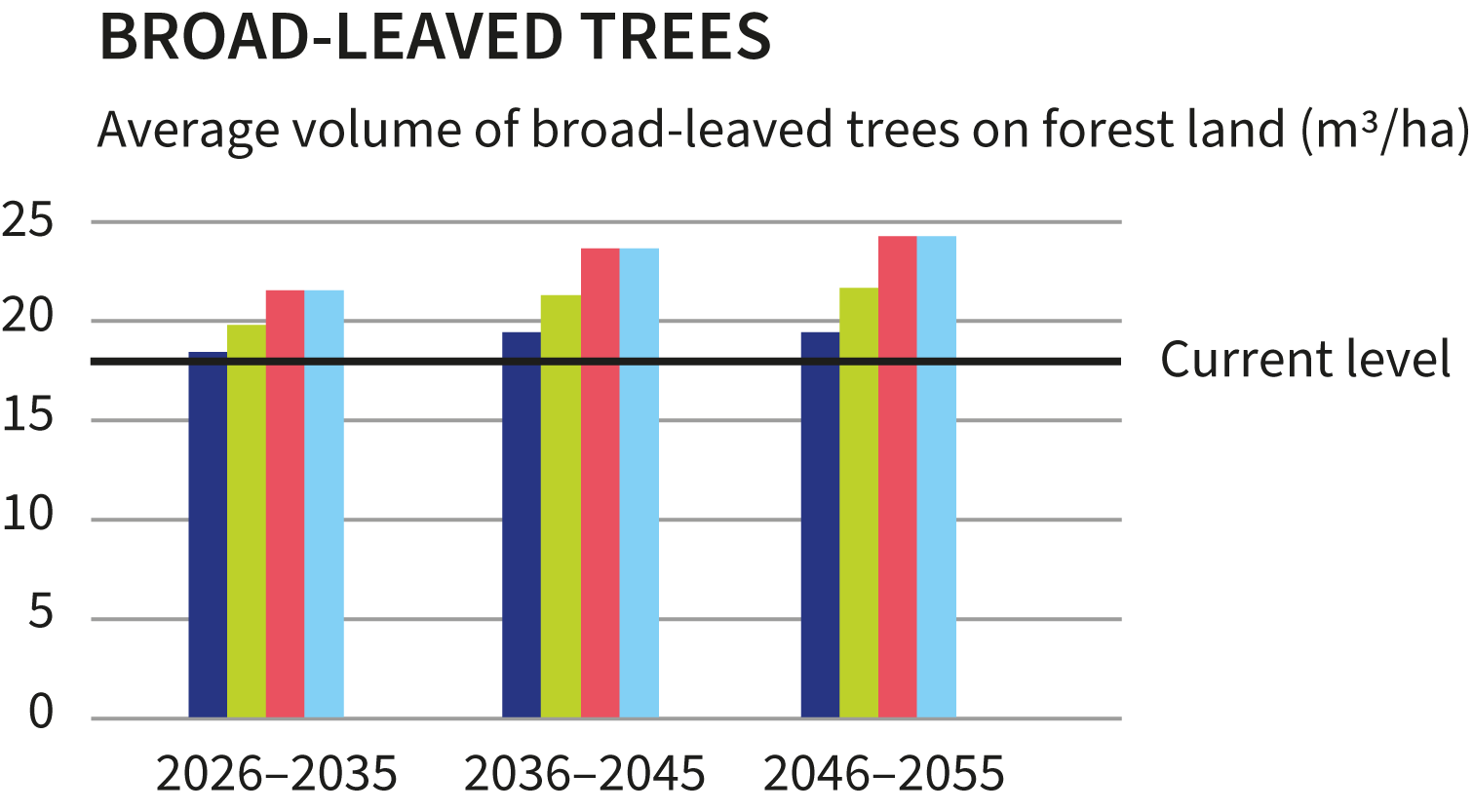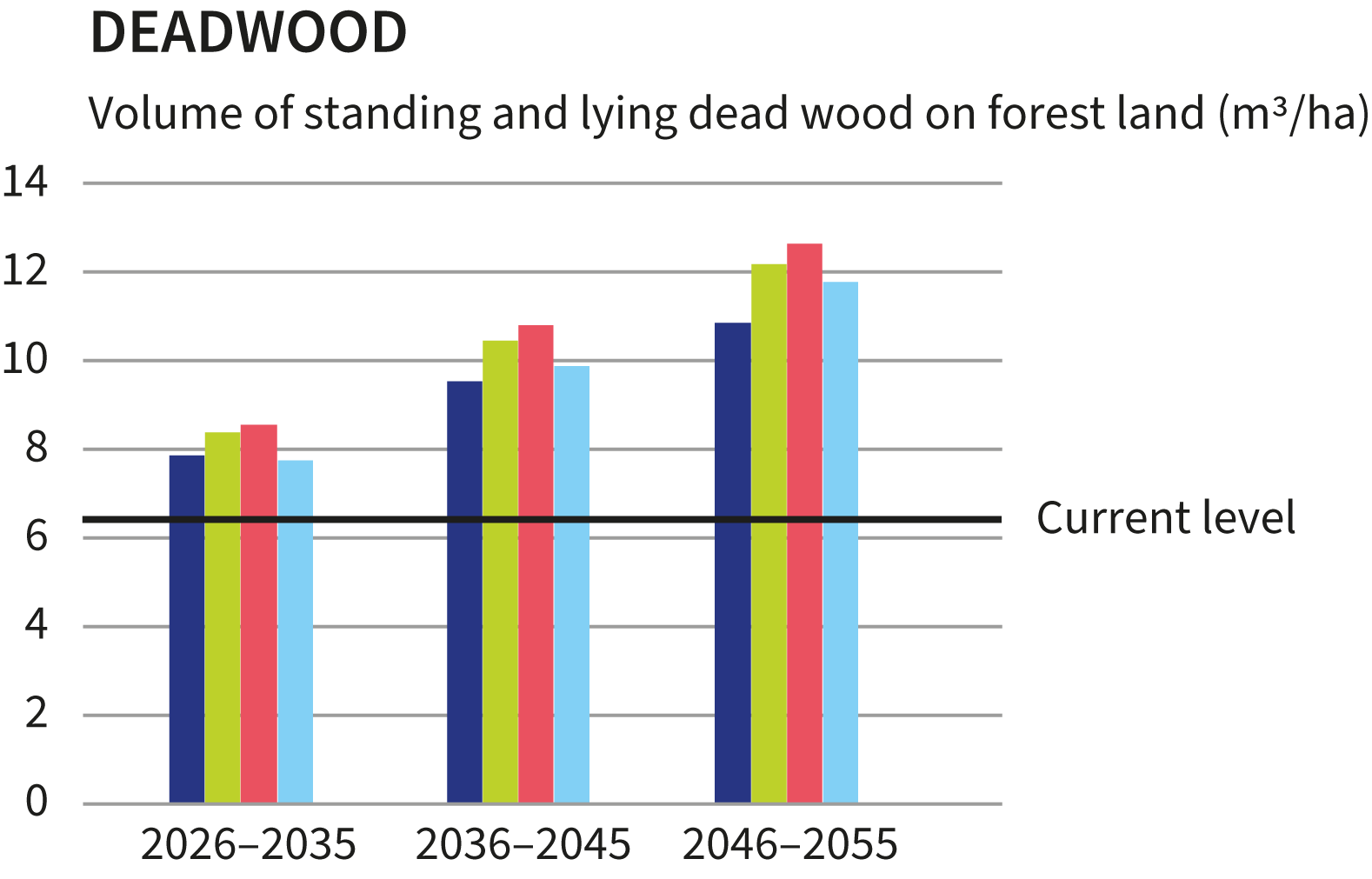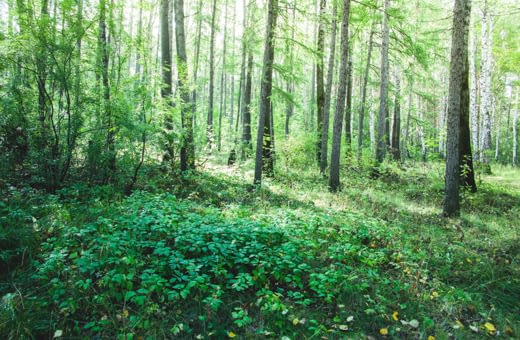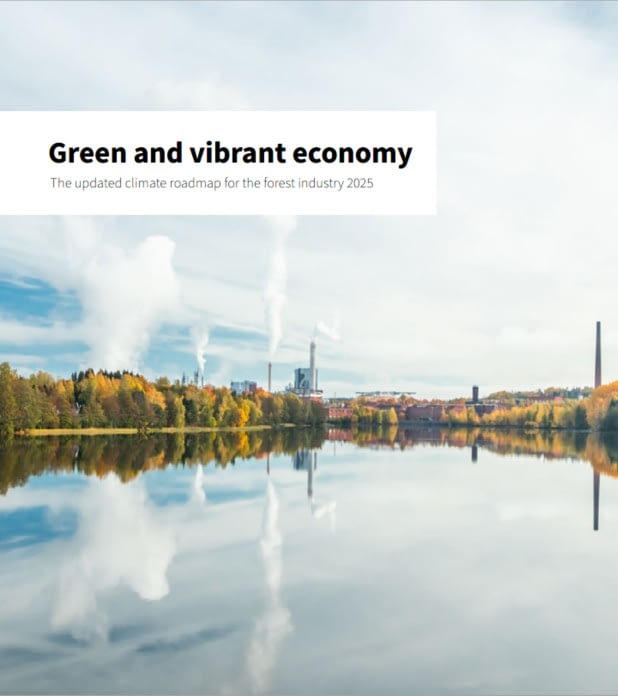The adequacy and interrelationships of actions for biodiversity were reviewed and assessed using scenario calculations. Scenarios describe a possible future vision based on predetermined assumptions. The results show that targeted measures as part of forest management can significantly increase the structural features important for forest biodiversity.
Forest certification is an integral part of Finnish forestry, covering more than 90 per cent of our managed forest area. The updated national FSC and PEFC forest management standards that came into force in 2023 will have an impact on the state of biodiversity in Finland. The standards encourage, for example, the addition of broad-leaved trees at different stages of forest management, which will be visible in the future as an increase in the volume of broad-leaved trees and the diversification of the tree species.

Predetermined assumptions for the scenarios
Scenario 1 (SC1): FSC and PEFC forest management standards in force until 2023.
Scenario 2 (SC2): FSC and PEFC forest management standards in force since 2023.
Scenario 3 (SC3): Enhanced actions, over SC2 in terms of broad-leaved trees (20%), number of retention trees and buffer zones.
Scenario 4 (SC4): SC3 and the additional measures concerning forest growth and management restrictions in the Finnish forest industry’s climate road map.
The scenarios include the current areas of protection and areas with limited wood supply, as well as additional protection objectives in accordance with the national voluntary METSO and Helmi programmes (90,000 ha).
The scenarios are derived from the maximum sustainable yield of commercial timber and energy wood (Natural Resources Institute Finland).

The number of retention trees may increase by tens of millions of trees.

In 2055, our forests may contain up to twice the number of retention trees compared to the current state. This is partly reflected in the number of large-diameter trees.

The same positive trend can be seen in the volume of standing and lying dead wood.

It may even double. Currently, there is an average of 6,6 m3 of dead wood per hectare on forest land (forests available for wood supply and protected forests, National Forest Inventory 13). Measures in managed forests play an important role in achieving the goal of the National Forest Strategy 2035 by increasing the total amount of dead wood towards 10 m3 per hectare.
The diversity of dead wood is examined in terms of tree species, size categories of the stems and rates of decay. Based on this, dead wood is expected to diversify in terms of quality significantly, which will improve the conditions for species dependent on dead wood in future forests.
Renewed forest certification practices produce great results in the development of structural features important to biodiversity. Even more positive results can be achieved by intensifying the selected actions. Higher targets for increasing the number of broad-leaved trees and the quality and quantity of retention trees will develop the structural features in a positive direction.
The diverse needs and expectations targeted at forests require not only the promotion of biodiversity, but also the strong growth of forests. The key conclusion of the scenario reviews is that the goals of wood production, forest-related climate goals and goals related to the state of nature can be reconciled when the investments in forest growth are also stronger than at present. In the studied structural features, the conflict of objectives is only reflected in the decrease in the amount of dead wood with a small diameter in managed forests, which is not the most significant factor from the biodiversity point of view.






